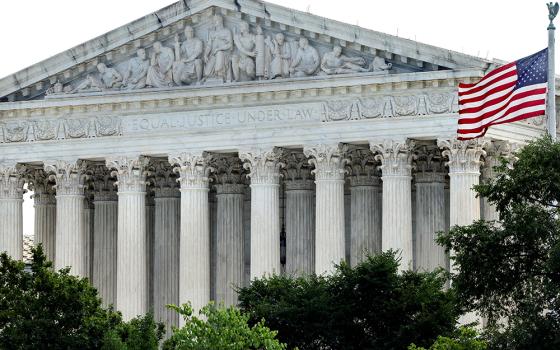We're a month removed from March Madness and the college basketball national championship games. It's been nearly a decade since my alma mater, DePaul University in Chicago, even made the men's tournament, so I'm used to filling out brackets without writing my school's name in it. Even when they do make it, I feign off school spirit and pick the other team in the interest of winning the bracket.
DePaul has a rich basketball tradition, with George Mikan among its greatest players and Ray Meyer among an elite class of Hall of Fame coaches. DePaul not making the tournament goes unnoticed by my friends from those years. I was an incoming freshman during a year when DePaul somehow recruited local Chicago phenoms like Quentin Richardson, who still suits up for the New York Knicks in the NBA.
Even though I lived on campus the majority of time I was in school, there wasn't a whole lot of school spirit when it came to basketball. The men's team plays its home games a long shuttle ride away from the main campus at the Allstate Arena. The men's team draws just enough fans that it doesn't make sense to play on the school's crammed Lincoln Park main campus, which covers about half a mile from east to west and maybe a third of a mile from north to south. I went to a lot of the women's basketball games since they were on campus and consistently played well under head coach Doug Bruno.
DePaul, like many other Catholic schools in the Big East conference, has no football program, so men's basketball is the big revenue-generator. It's a slight irony to me that men's basketball can even shape financial decisions at DePaul, as they usually play in front of loose crowds at the Allstate Arena. But if they're playing the Fighting Irish, a bunch of Notre Dame fans make the two-hour trip, and Golden Eagle fans make the hour-and-a-half trip down from Marquette's campus in Milwaukee.
As Brian Roewe reported in NCR, DePaul is part of a mass exodus of seven Catholic schools from the old Big East conference. They retained the Big East name, negotiated a $500 million television deal, and are adding three other schools (two of which are Catholic and Jesuit, and one, Butler University in Indianapolis, that is simply private and not religiously affiliated). Football is the true moneymaker in men's college athletics, so many of the football schools have been leaving the Big East for more lucrative ventures. But the Big East has traditionally been about men's basketball, beginning with its formation in the early 1980s with Patrick Ewing signing with the Jesuits' own Georgetown and including the conference's deal to play its tournaments at Madison Square Garden (the world's most famous arena in Manhattan). It has also developed many storylines between urban campus rivals.
The deal makes financial sense for the basketball programs. There are so many stories out there about how basketball can raise the profile of a university. Butler made it to two straight national championship games in 2010 and 2011 and saw its number of applicants to the school increase from 6,760 in 2010 to 9,682 in 2012. This Indianapolis Business Journal article talks about how the university actually used a more successful basketball program to increase alumni engagement (and thus donations from alums), increasing attendance at home games and coordinating alumni events in urban East Coast cities during road games. Butler began to employ a live bulldog as its mascot and secured nearly half a million in-kind design services from Disney for a new logo.
Enrollment increases because of successful men's basketball performance isn't unique to Butler. The New York Times published a glowing piece on Miami coach Jim Larranaga this year, highlighting the run George Mason University had in 2006, when Larranaga was coach. After George Mason, a 30,000-student school 20 miles outside of Washington, D.C., made it to the Final Four in 2006, the school saw out-of-state applicants increase 54 percent the next year. Visitors to the school's admissions website increased by 150 percent. And more remarkably, the SAT scores and grade point averages also shot up during this time. The school saw $800,000 in revenue from basketball in March 2006, topping the rest of the year's income from basketball by $175,000.
With numbers like this, it's no wonder so much attention is paid to college athletics, in particular to revenue-generating sports like football and men's basketball. I'm not naïve to the point where I don't understand that the money that comes into DePaul from men's basketball and its television deals help subsidize the things I thought made the university great, such as the school's commitment to community service through campus ministry in the spirit of St. Vincent DePaul.
Yet somehow, with no football program and a mediocre (at best) men's college basketball program, DePaul has managed to become the largest Catholic university in the country. I'm proud that DePaul became the first Catholic school in the country to offer a queer studies minor (more on that from this piece on NPR in 2006). DePaul stays true to its mission and Vincentian heritage, providing opportunities for students and faculty to pilgrim to Vincent's historical sites in France as well as doing massive amounts of engagement in Chicago's community of neighborhoods. I learned some in the classrooms, but DePaul created so many opportunities to learn from others in the city of Chicago.
I haven't heard a peep from my fellow alums about whether they're excited about DePaul setting its basketball priorities straight in order to form the new (mostly Catholic) Big East. I was hoping to find someone who said it had a lot of impact, as if their framed diploma would somehow go up in value from this move. I'm sure the additional revenue from the new TV deal will contribute to those experiences that made my time at DePaul great. And hopefully someday, I'll have a reason to pencil DePaul in my annual basketball bracket.
[Mike Sweitzer-Beckman helped launch the blog youngadultcatholics-blog.com in 2008. He also blogs at sweitman-solutions.com about technology.]
Editor's note: We can send you an email alert every time a Young Voices column is posted to NCRonline.org. Go to this page and follow directions: Email alert sign-up.





